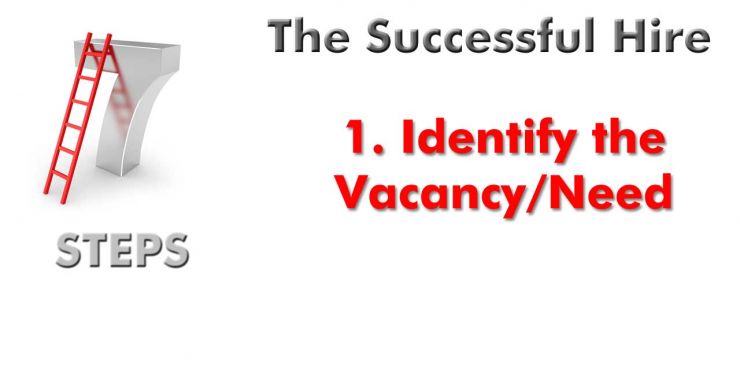Identify the Vacancy
Share This Page

For employers, filling a job vacancy is a daunting and time consuming task. Initially, the employer should be asking themselves: why is there a need?
Sounds simply, but ask these questions. Is there a new hire creating support requirements, expansion, increased volume, new practitioner, replacement? No matter what your reason is you should treat the hiring process as a core business practice.
Two best practices to employ while conducting a search are: have a plan, and have a timeline. Ultimately, these two things will help you to reach your goal. You can start by creating a job description and lay out the basic framework:
What position do you need to fill?
- Title
- Report to
- Job Description
- Compensation package
The Job Description
- Title
- Report to
- Scope of practice
- Responsibilities
- Hours
Good Practice Tips
A well written job description serves a multitude of purposes and the better they are written, the more useful they will be. There is a lot of power in defining roles. Think about athletes and how each member of the team functions both independently and dependently at the same time. As much as each athlete can function well on their own, they still need their teammates to bring the team to victory. This is because each member has a clearly defined role and knows what their job function is and how that function influences other teammates. The same idea can be attributed to the workplace.
The anatomy of a job description: what to include and exclude
Knowing what to include in a job description is the first step towards making a good one. A lot of employers are unsure about what to include or exclude. Very long job descriptions are not only intimidating to the candidate but can also be incredibly time consuming to the employer. If candidate is reading a three page job description chances are they will talk themselves out of applying to the job because if you include every little detail the candidate will assume they aren't qualified enough and pass. You need to include the most important and succinct information that will get the word out to experienced candidates without discouraging them. Include the job title, experience and education that are needed.
Leave out details that are better to be discussed in person. For instance if you are unclear about the hours do not write 'hours vary' because a lot of people might be turned off by this; Instead, when you bring the candidate in for the interview explain that one or two days a week your office hours might be an hour or two later than usual. The benefit of explaining yourself face to face with a candidate means that they have already gotten a feel for you and your practice so talking about the later hours might not be an issue once they have met you. You should also leave out compensation specifics; even giving a pay range can be tricky. Deciding upon pay should ultimately come done to the candidates experience and their current pay. Save the compensation discussion for when you are face to face. You have to be willing to pay people what they are worth and they only way to know that is to review their resume, meet in person and have a discussion about their experience.
Small practices vs large practice: value of descriptions
In a small practice the motivation for job descriptions comes from having employees do more than one job function. In a small practice there will be some overlap in job responsibilities. While you could some overlap in a large practice it is not as likely. What you can expect is there will be more than one person doing the same job you are so you will have to be able to communicate effectively with others. Take into consideration the size of your practice when writing a job description.
Who should be responsible for crafting job descriptions?
The responsibility for writing job descriptions should be placed on the practice manager and physicians. These are the people who know what they need from an employee. Even though crafting a job description can be time consuming once you have done the work you can tweak them to fit your needs.
When an employee leaves your practice without giving much notice you have to be able to fill the position quickly and efficiently. Job descriptions are an investment for your practice. You can fill jobs when you know what you are looking for and you can attract better candidates. Job descriptions are worth the time and effort for you and your practice.
